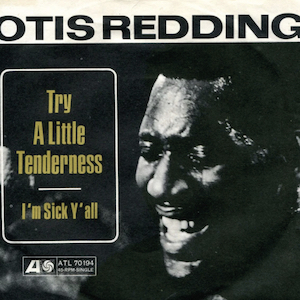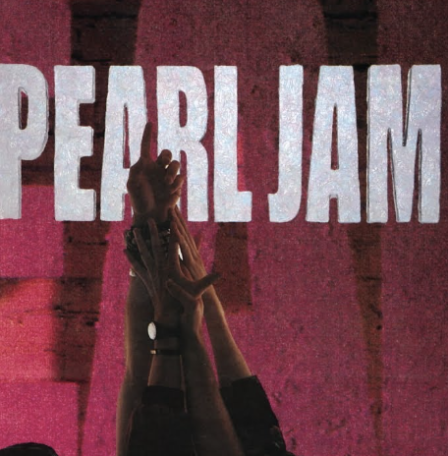Behind The Cover
By Iris Farmer
In an alternate universe, how would your favourite songs sound? Well you don’t need to jump timelines to figure it out, some of your most loved tunes may have originally been written and performed by entirely different artists at a much earlier date. Time to talk cover songs. From paying tribute to an iconic singer, to breathing (or singing) new life into music that otherwise may well have remained a flop, or even covers that have the power to push their originator into the background and become a success all on their own. Find out more in Behind The Cover
Some original versions of these tracks are often unrecognisable when listened to, so different they are from the covers we all know and love. Who knew an old German tune could turn into a huge hit from one of today’s most popular artists, and that one of the most famous feminist pop songs ever made was originally intended to be a rock song from the male point of view?
I Fought The Law
Sometimes the covers we love are actually a cover of a cover. The song I Fought the Law was first released by The Crickets in 1959 but was made famous in 1966 by the Bobby Fuller Four. The version many of us are aware of is by Punk band The Clash and was released in 1979 with each version topping the last.
Although always categorised as a rock song, you can clearly hear the changes in the music style over the years, The Clash’s version has an intensity and passion behind it that the other two seem to lack.
The reason behind this requires us to take a quick look at the political climate in the Uk at the time of the song’s release. On May 4th, 1979, Margret Thatcher became the Prime Minister of the Uk and on the same day the song was released on their The Cost of Living Ep. I Fought The Law was used by The Clash to inspire political activism among all generations, urging people to stand up to “The Iron Lady”.
Renegades of Funk
Another cover that was released on Election Day, this time it was the US election on November 7th, 2000 the day George W. Bush was elected as president. Covered by Rage Against the Machine, the song was included on their cover album titled The Renegades. Both the cover and original, which was released in 1983 by Afrika Bambaataa & The Soulsonic Force, used politically charged lyrics to connect the listener to the future and the past of hip-hop and the revolutionaries that developed the genre and the world into what it is today.
The music video released by Rage Against the Machine after they had already broken up, depicts historical moments and revolutionaries from the civil-rights movement. These individuals who range anywhere from Martin Luther King Jr. to Susan B. Anthony, are considered the Renegades of Funk.
Girls Just Wanna Have Fun
So which huge pop song was never meant to be pop? That would be Girls Just Wanna Have Fun by Cindy Lauper. Originally, the song was written and recorded by Robert Hazard in 1979. He wrote the song about how girls weren’t focused on much besides being frivolous, but then later worked along with Cindy Lauper in 1983 who helped turn the song into the feminist pop hit that gets stuck on a loop in all heads.
Lauper changed the song in order to tell the world that all girls really want is to have the same experiences that men have without the judgment or obstacles that are cemented into the reality for women across the world. The two versions sound similar lyrically and melodically, the main differences being some gender changes as well as the genre switch.
Piece of My Heart
One thing that Erma Franklin and Janis Joplin have in common is their most famous song. Piece of My Heart, which is Erma Franklin’s biggest hit released in 1967, and then covered the following year by Big Brother and The Holding Company, with Janis Joplin as the lead singer. Always a successful song, but Janis Joplin is the one who skyrocketed it into infamy.
Erma’s version, which has a smooth and deep soulful sound, ranked 62 on the top 100 charts while Big Brother’s version, which has more of an intense rock feel, ranked 12.
It’s Oh So Quiet
Listening to the original track of It’s Oh So Quiet, it would be hard to guess that it would turn into an internationally known hit song.
Starting out as a funky little German tune performed in 1948 by Horst Winter, then Betty Hutton released the very first English version in 1951, and it sounds much closer to the version by Björk in 1995.
Betty’s has more of a 50’s sound compared to Björk’s modern take, and halfway through there is some creepy group whispering (which luckily Björk’s version lacks) but that’s to be expected considering the time period.
All About Blondie
Some bands cover songs, some bands get covered, and some bands do both. Working as a group since 1974 it is no surprise that Blondie would be covered, but which of their iconic hits aren’t originally theirs?
Hanging On The Telephone
If not for Blondie, this song could have possibly remained unknown forever. It was recorded by a band called The Nerves in 1976. In their short stint as a band, (1974-1978) they only released the one and only Ep which contained four songs, one of which was Hanging on the Telephone. Debbie Harry and the members of Blondie were sitting in the back of a taxicab when they decided to play a cassette tape that was given to them priorly. Debbie notes that as the song played they noticed the driver tapping along on the wheel.
Once she realized the band had broken up, she decided they definitely needed to cover the song, so they turned it into the hit that we know today. The Nerves never made any more music but we can thank them for this piece of music history.
The Tide Is High
Versatility is a virtue and one of the reasons that Blondie was so successful was because of their ability to play many different genres and play them well. At the time, The Tide is High was a surprising hit for Blondie, released in 1980, this cover was their first dip into the reggae scene, and it was a smash.
Originally released in 1966 by The Paragons, the song was their biggest hit and was popular in their home country of Jamaica, but still ranked nowhere near Blondie’s version which climbed to the #1 spot of the US billboard top 100. It is also ranked #1 in the hearts of the Blondie band members, as it’s their favourite song the band ever put out.
Heart Of Glass
Heart of Glass is Blondie’s most popular song to date and has been covered hundreds of times by various artists. This one is not a cover by Blondie, but is their original released in 1978. Covered in 2020 by Miley Cyrus, she has nearly double the amount of streams as Blondie does with the same track.
This doesn’t necessarily mean the Miley version is more popular, as Blondie’s song has been out for nearly 50 years and is on cassettes, CDs, and Vinyl around the world. It does however mean that Miley may have brought the song to the attention of younger generations, who may have never heard of Blondie before.
Cover songs are a great way to see how a different perspective can shape what once was. From past to future, the very arrangement can let us almost time travel with each version.
If you enjoyed reading Behind The Cover, why not read Up The Elephant
.Cent magazine London, Be Inspire; Get Involved





